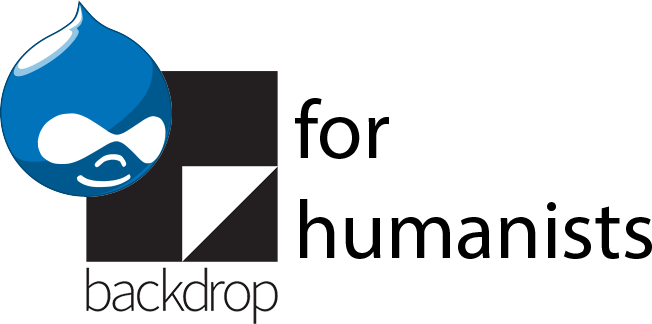Installing Drupal on your own computer
If you don’t have reliable internet connectivity in the time and place you want to build your Drupal site, you’ll need to install it on your own computer. Running Drupal on your own computer comes with a number of downsides: you’ll have to migrate the site to a hosting provider if you ever want to launch it, and you can’t really collaborate with anyone (for instance, to facilitate data entry), since no one else will be able to access the site until you put it online. Setting up Drupal on your own computer also requires you to install infrastructure-level software (e.g. MySQL, PHP, Apache) that’s already running in almost any server environment. Because running Drupal on your computer is a much more involved process than setting it up in an existing server environment (e.g. using a server provided by your institution, inexpensive shared hosting, or a Drupal-specific cloud hosting provider), it’s not generally the best choice unless a lack of reliable internet connectivity is a major issue for you.
Mac/Windows: Using Acquia Dev Desktop
(Fast, easy installation. Great for locally developing sites you’ve built elsewhere. Not good for creating new sites from scratch.)
The easiest way to run Drupal locally on a Mac or Windows machine involves installing Acquia Dev Desktop. This software automatically installs and configures all the technical prerequisites for running Drupal, and provides a user interface for creating new sites. The documentation for how to install and use Acquia Dev Desktop is fairly clearly and accessibly written and is kept up-to-date.
A couple caveats: Acquia Dev Desktop is a great way to run existing Drupal sites on your own computer. If you’ve started building a site somewhere else, but need to work on it when you’re off-line, you can download the site’s code, files and database and "import" the site into Acquia Dev Desktop.
If you want to build a Drupal site completely from scratch (as described in Drupal for Humanists, Acquia Dev Desktop is not the best option. There isn’t a way to install plain, vanilla Drupal: the closest you can come is installing "Acquia Drupal", which is a distribution provided by Acquia that includes numerous additional modules, some of which are Acquia-specific. A site you create using "Acquia Drupal" won’t exactly line up with the instructions in Drupal for Humanists (which assumes you’re using plain, out-of-the-box Drupal), and even if you migrate your site elsewhere, you may start seeing error messages if you remove some of the vestigial Acquia-specific modules and configurations.
Mac: Using MAMP
MAMP is software that installs all the necessary server-level software on your Mac. By default, when you install MAMP it will install both MAMP and a 14-day trial of MAMP Pro. You don’t need MAMP Pro; just go ahead and use MAMP.
Drupal.org has step-by-step documentation for installing Drupal using MAMP, and you can also find videos of the process (e.g. this MAMP/Drupal installation video on YouTube.)
Windows: Using WampServer
WampServer installs the necessary server-level software on a Windows machine. There’s step-by-step documentation on Drupal.org, and here’s a YouTube video of the process.
Mac/Windows: Using XAMPP
XAMPP is another package that can install the server-level software on Mac, Windows or Linux. Unlike the options listed above, it uses MariaDB instead of MySQL as the database, but MariaDB is meant to be a drop-in replacement for MySQL (i.e. you can use it the exact same way, and it works just the same) so you shouldn’t encounter any problems with it.
